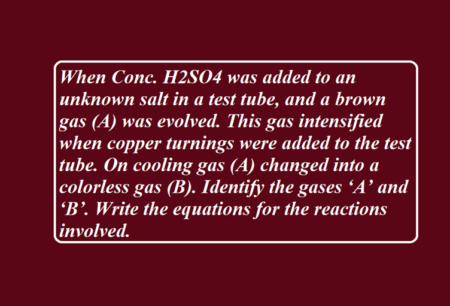Important concepts in p- Block Elements
Important concepts in p- Block Elements
1. Shielding Effect: A reduction in the effective nuclear charge on the electron cloud, due to a difference in the attraction forces on the electrons in the atom. It is a special case of electric-field screening. This effect also has some significance in many projects in material sciences.
2. Inert pair effect: The reluctance of the valence s-electrons to be available for bonding as compared to the valence p-electrons due to their greater penetration in the nucleus.
3. Fuming nitric acid: Nitric acid containing dissolved NO2 is known as fuming nitric acid. It can be obtained by distilling concentrated HNO3 with a little starch.
4. Fuming nitric acid: Nitric acid containing dissolved nitrogen dioxide.
5. Aqua-regia: Mixture of nitric acid and hydrochloric acid in a ratio of 1: 3.
6. Chalcogens: Group-16 elements are also known as chalcogens which means ore forming elements.
7. Oil of vitriol: Pure sulphuric acid is highly viscous due to the presence of intermolecular hydrogen bonding. It is known as the oil of vitriol.
Important concepts in p- Block Elements
8. Oxide: A binary compound of oxygen with another element.
9. Phosphazenes: These are the cyclic compounds which contain both nitrogen and phosphorus atoms in the alternate position along with two substitutes on each phosphorus atom. These are cyclic trimers, tetramers, or polymers in nature.
10. Pseudohalide ions: CN–, SCN– and OCN– ions are called pseudohalide ions while (CN)2, (SCN)2, and (OCN)2 are known as pseudo-halogens.
11. Bleaching powder: Ca(OH)2 + Cl2 CaOCl2 + H2O
12. Pnicogens: The nitrogen group is group-15 of the periodic table and is also collectively named the pnicogens or pnictogens. The word pnicogens is derived from the Greek word pnigein which means ‘to choke or stifle’ which is a property of nitrogen.
Important concepts in p- Block Elements
IMPORTANT REACTIONS OF P – BLOCK ELEMENTS CLASS 12


